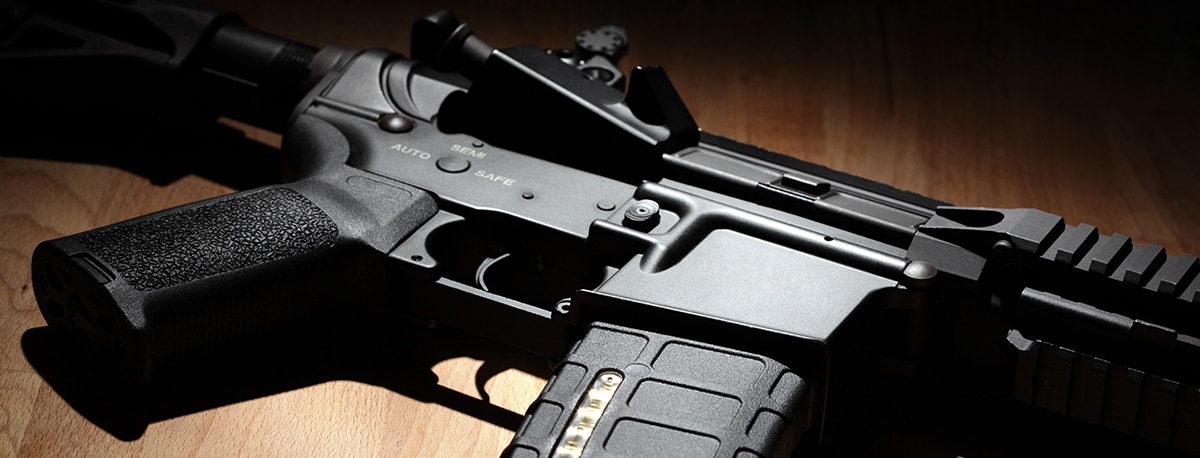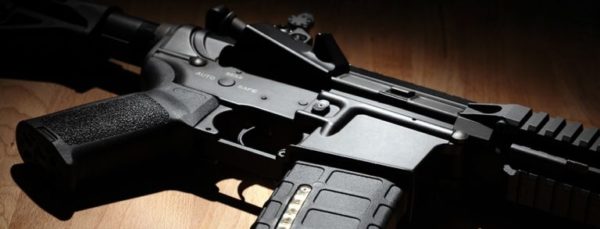Demystifying the AR-15

Beloved by many, despised by many others, the AR-15 is the most controversial firearm in America. The gun’s notoriety primarily stems from its use in some of the deadliest mass shootings in United States history, including Parkland, Sandy Hook, and Las Vegas. Critics suggest that it is a military-grade killing machine that is too powerful for unrestricted civilian use, while the AR-15’s millions of owners suggest that its power is the exact reason why it is so valuable for self-defense and sport.
The frequent media coverage and controversy over the AR-15 have made it a symbol of the debate over firearms in America. But many people who are not members of the firearms community still know relatively little about it. What is it about the AR-15 that makes it so special—and so deadly?
The following article will give some background information about the AR-15, explain what makes it so effective, and point out some of the reasons why the gun has been wrongly vilified.
What is the AR-15?
The AR-15 is a semi-automatic rifle (one shot per trigger pull) created in 1957 by a little-known firearms manufacturer named Armalite. Contrary to popular belief, the “AR” in AR-15 actually stands for “Armalite,” not “assault rifle.” The gun was originally designed to meet the U.S. military’s request for an automatic rifle that could effectively replace the rifles and submachine guns used during World War II, which had been deemed underpowered or otherwise outdated.
Studies at the time suggested that the nature of war had changed and that most combat was now being fought at close to intermediate ranges, rather than the long ranges that characterized World War I. To that end, the AR-15 was chambered in an intermediate-sized caliber (.223 Remington) that was well-suited for this style of combat.
Aside from its caliber, the AR-15 boasted a handful of innovative features for the time, including a straight-line barrel/stock design which helped reduce recoil and muzzle rise, making the gun relatively easy to shoot. The rifle was also constructed out of polymer and aluminum alloys, which made it significantly lighter than other comparably sized firearms (Most guns previously had been built with wood and steel.).
The AR-15 was first adopted for military use during the Vietnam War and was dubbed the M16. The M16 and its variants, which unlike the civilian AR-15 come equipped with either full-auto or burst fire capabilities, have become staples of the U.S. Armed Forces, and the original M16 was described by “American Sniper” Chris Kyle as one of the 10 firearms that changed United States History.
Nowadays, the name AR-15 is used as a catchall term for rifles built in the AR-15 style. Technically, the only manufacturer that produces an actual AR-15 is Colt, which obtained the rights to the gun from Armalite in 1959. However, countless manufacturers now make semi-auto AR-15-style rifles that can be purchased for civilian use.
Why is the AR-15 So Effective?
Without getting bogged down in the technical details, AR-15-style rifles are renowned for four primary characteristics: they are lightweight, reliable, customizable, and easy to shoot.
We touched on the AR-15’s lightweight build in the previous section. There we saw that due to its aluminum and polymer construction, the AR-15 is significantly lighter than many comparable rifles. In fact, the average AR-15 only weighs about 6 pounds while unloaded, which makes it convenient for both military and civilian usage, particularly for individuals with limited upper body strength including women, the physically disabled, and even children.
AR-15s have also become known for their reliability. The basic design has remained largely unchanged for the last 50 years (albeit refined), and a modern AR-15 can likely fire thousands of rounds using quality ammunition without any issues. AR-15s are also highly modular, meaning they can easily be taken apart and reassembled with replacement parts should anything ever fail.
Another important selling point of AR-15s is that they are extremely customizable. The AR-15’s modular design, in combination with its overwhelming popularity, means that there is a huge selection of AR-15 parts available from both gun manufacturers and companies specializing exclusively in parts and accessories. AR-15s can be equipped very easily with add-ons like scopes, red dot sights, flashlights, bipods and more. Some have even called the AR-15 the “Barbie doll for guys”— because you can accessorize it however you like!
Finally, the single most important characteristic of the AR-15 that has made it the phenomenon that it is today is that it is very easy to shoot. A quality AR-15 has a muzzle velocity of about 900 m/s and an effective range well over 400 meters. The high speed at which bullets are fired, along with the previously mentioned straight-line barrel/stock design, helps to make AR-15s extremely accurate. An experienced shooter can shoot groupings of 1-3 inches from 100 meters away, but even a novice shooter will be significantly more accurate with an AR than they are with a handgun. This feature alone has made the AR-15 extremely popular for sport shooting, hunting, and self-defense purposes. The AR-15 is especially valuable for self-defense because almost anyone can use one effectively within the usual self-defense distances, regardless of shooting experience or physical ability (strength, age, physical disability, etc.).
Together, these characteristics help to explain why the AR-15 is so effective and so popular. It is simply a well-designed, time-tested firearm that is reliable, easy to use, and easily customized.
Too Powerful for Civilian Use?
There is no denying that the AR-15 is a highly effective and, if held in the wrong hands, a highly dangerous weapon. An important fact to keep in mind, however, is that the same could also be said of other so-called “assault weapons” with civilian semi-automatic versions available for sale today.
For example, not far behind the AR-15 in terms of notoriety is the AK-47, a Russian-designed firearm first created in the Cold War. Compared to the AR, the AK is less accurate at long ranges and a fair bit heavier, but it fires a significantly larger-caliber round and is equally if not more deadly at close to intermediate ranges. A prospective mass shooter armed with an AK would likely be able to do just as much damage as they would with an AR.
Point being, the AR-15 has gotten its reputation for being the “gun of choice” for mass murderers not because it is uniquely effective for committing such atrocities, but simply because it is the most popular semi-automatic rifle design on the market today. Thus, the vitriol directed at the AR-15 is somewhat misplaced.
Of course, many gun control advocates have suggested that all “assault weapons” are too powerful to be trusted in civilian hands. These critics ignore the fact that according to the FBI, rifles of all kinds, including both semi-automatic and bolt-action rifles, are used in an extraordinarily small percentage of homicides—just 2.5 percent in 2016 and 1.9 percent in 2015.
Instead, these activists are committing a logical error thoroughly examined by criminologist Grant Duwe in his seminal text, Mass Murder in the United States: A History. According to Duwe:
“…Claimsmakers [journalists, politicians, etc.] have used high-profile cases not only as indicators of trends in the prevalence of mass killings, but also as typifying examples…[However,] the high-profile cases are the most unusual and least representative examples of mass murder, which is precisely why they are more newsworthy. Consequently, in using heavily publicized cases as typifying examples, claimsmakers have presented a distorted image of mass murder. This is significant because the popular perceptions of a problem often help shape the policy recommendations to control it.” (Emphasis added)
Good public policy is rarely derived from snap judgments about the “least representative examples.” Firearms, like many other kinds of technology, have a direct relationship between their capacity to be used for good and their capacity to be used for evil; the same characteristics that make an AR-15 dangerous in the hands of a lunatic make it invaluable in the hands of a hero. It seems to me that the majority of Americans are good, law-abiding citizens who should not be wrongly punished for the horrible deeds of a few deranged individuals. Thus, a ban on assault weapons like the AR-15 would likely do significantly more harm than good and make us less safe, not more.
The original article can be accessed at GunPros.

